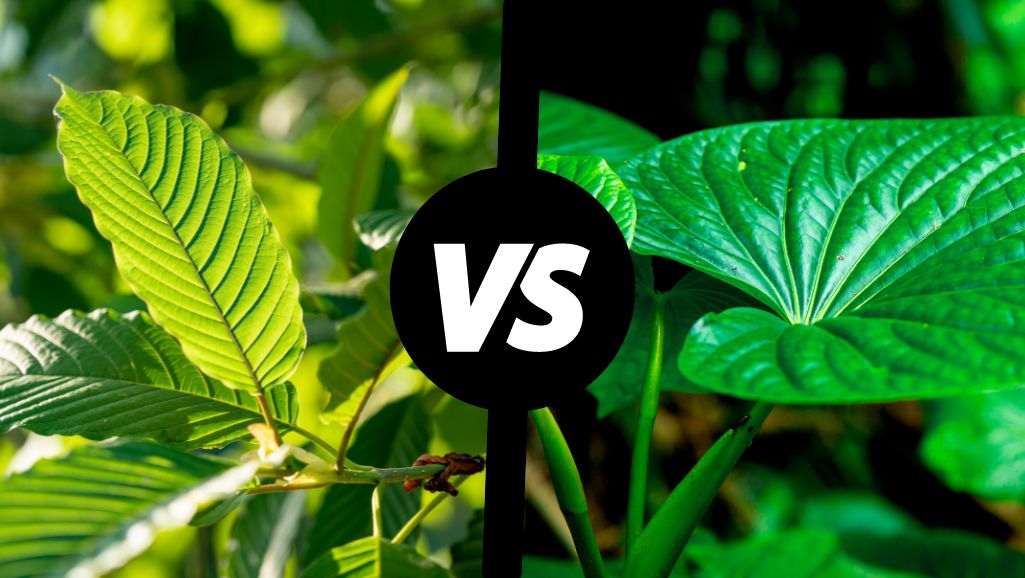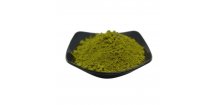Wondering which of the herbal supplements - kratom or kava - is better for you? Both of these plants are known for their effects on the human body and psyche, but they differ in many aspects. If you are interested in their main active ingredients, effects, risks and cultural perspectives, this article will provide a detailed comparison and help you understand how kratom and kava affect our body and mind.

It is logical to compare kratom and kava and wonder which one is actually better for you. Kava has a calming effect and can relieve pain, improve sleep and promote sociability. Kratom, on the other hand, has mild sedative effects in small doses, but can have more of an opiate effect when taken in large doses.
This is a simple explanation, but let's look at this topic in more depth.
Active ingredients and effects
Kratom and kava are two plants that have become popular in recent years mainly because of their effects on the human psyche and body. Both herbs come from different parts of the world and have different active ingredients. However, many people use them to relieve stress, anxiety and to promote relaxation. Let's take a look at the main active ingredients and effects of both plants.
Active ingredients and effects of kratom
Kratom, or Mitragyna speciosa (scientific name), is a tropical tree plant native to Southeast Asia. It is known for its psychoactive effects, which are primarily due to the alkaloids mitragynine and 7-hydroxymitragynine.
These substances affect brain receptors similar to opioids, resulting in pain relief, increased energy, or conversely, relaxation, depending on the dose. Higher doses usually lead to sedation, while lower doses can be stimulating.
Users of kratom often report that it helps them with pain, anxiety and that it improves their mood. However, Kratom is also associated with potential risks and side effects such as addiction, nausea, dizziness, and mood swings.
.jpg)
Photo: kratom
Active ingredients and effects of kava
Kava, or kava kava, is a beverage prepared from the roots of the Piper methysticum plant, which is native to the Western Pacific.
The main active ingredients of kava are kavalactones, which have sedative effects on the central nervous system. These substances help to calm, reduce anxiety and may promote better sleep. Unlike kratom, kava is not stimulating.
Kava is generally used for its relaxing effects, especially in social situations where it promotes a sense of well-being and relaxation without disturbing mental clarity. Side effects may include dermatological problems, fatigue or liver damage when taken in large doses over a long period of time.
Compared:
Kratom and kava have several similar effects, such as relieving anxiety and promoting relaxation, but the way they affect the body differs significantly.
While kratom can be both stimulating and sedating depending on the dosage, kava has consistently sedative effects and is known for its ability to promote social interactions without losing mental clarity.
Although both plants can offer relief from some mental and physical problems, it is important to be aware of the potential risks and side effects. It is advisable to consult a physician about the use of both kratom and kava, especially if a person has health problems or is taking other medications.
User experiences and cultural perspectives
Kratom and kava are plants with a rich history (read more about history of kratom) and cultural significance. However, both are from different corners of our planet. But user experiences, reviews and cultural perspectives vary depending on geographic location and cultural context. Let us dive into this more.
View of kratom
Kratom has been used in Southeast Asia for centuries, especially in Thailand, Malaysia and Indonesia. Traditionally, people there have chewed kratom leaves or brewed tea from them to provide energy during long days in the fields.
In a modern context, kratom is mainly used for its pain-relieving effects and as an aid to opiate withdrawal. User experiences vary, with some reporting significant relief from chronic pain, improved mood and increased energy.
On the other hand, negative effects such as nausea, dizziness and in some cases addiction are also reported.
In the Western world, kratom is often discussed in the context of its legal status, which affects its availability and awareness. Reviews in online forums and on social media (as well as other media) often reflect polarised opinions, with some users praising its effects while others warn of potential risks and side effects.
View of kava
Kava has important cultural significance in the Pacific, particularly in Fiji, Vanuatu and Hawaii, where it is traditionally used in rituals and ceremonies to promote social cohesion and relaxation. In these cultures, kava is seen as a drink that promotes peace and communication without aggression.
In Western countries, kava is often used as an alternative to alcohol because it promotes relaxation without intoxication and subsequent hangovers. User reviews often mention its effects on reducing anxiety and improving sleep.
A variety of kava products can be found in health food stores and online, from dried roots to ready-made drinks.
However, even kava can have side effects, especially with excessive use. Users complain of digestive problems or, rarely, liver problems, which can be associated with the consumption of poorly processed roots.
.jpg)
Photo: kava kava
Differences of cultural perception
While kratom is often perceived as potentially controversial and risky, especially because of its psychoactive and potentially addictive effects, kava maintains a positive image, especially in cultures where it is historically embedded as part of social rituals.
However, both beverages offer interesting insights into how different cultures approach plants with psychoactive effects, and how these views translate into global use and regulation.
Key takeaways
Kratom versus kava - so what's the verdict? Both of these natural products offer relief from anxiety and promote relaxation, but their effects and potential risks differ significantly.
Kratom can be stimulating or sedating depending on the dosage, while kava has consistently sedative effects and is known for its ability to promote social interactions without losing mental clarity.
It is also important to note that despite their potential benefits, it is important to keep in mind the potential risks and side effects. It is recommended that you consult with a physician before taking any of these products, especially if you are taking other medications or have medical conditions.
Due to differences in culture and perception, it may also be helpful to consider how these plants are perceived by different cultures around the world.
Our tip: We recommend reading also our comparison of kratom and kanna.









